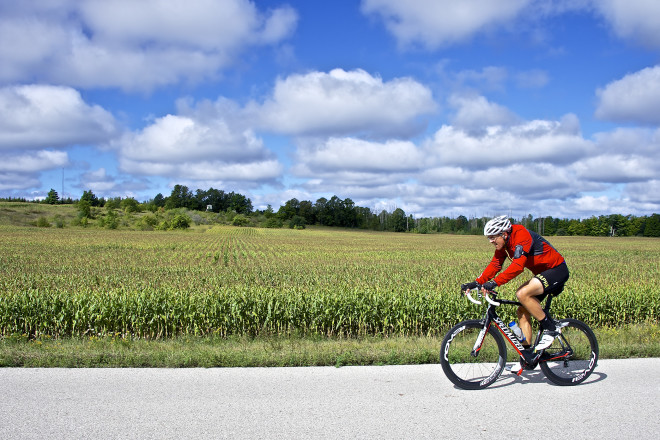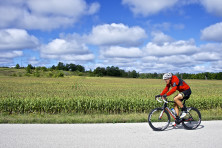The Rules of the Road: Cyclists and drivers both need education
- Share
- Tweet
- Pin
- Share

It’s that time of year again when complaining about cyclists becomes one of Door County’s favorite pastimes. The animosity between drivers and cyclists is always there, but it reaches a peak in September, when two large cycling events take place in Door County. There’s the 3,000-person Door County Century Ride, which took place last weekend out of Sturgeon Bay, and there’s this weekend’s 700-person Fall Challenge in Sister Bay, which I help to organize.
As a cyclist, I cringe when I see the complaints about bikes on social media, in large part because many of them are made by people who clearly don’t understand the rules for cyclists or drivers. But I also get frustrated at cyclists who don’t follow the rules, giving us all a bad name.
So I reached out to Michelle Bachaus of the Wisconsin Bike Federation for some tips. The Bike Federation has worked with the Wisconsin Department of Transportation to develop helpful guides for cyclists, drivers, communities and law-enforcement agencies.

“One of the most important things drivers have to realize is they must allow three feet from the right-most side of the vehicle to the left-most part of the bike when passing,” Bachaus said. “And cars must wait until it’s safe to pass, even if that means slowing down.”
In other words, drivers are not entitled to maintain their speed regardless of the presence of pedestrians or cyclists.
Bachaus said the number-one thing most drivers don’t know is that bikes are not only entitled to use the road, but in most places, they are legally required to ride on the road. Wisconsin state statute defines a bike as a legal vehicle with the same rights and responsibilities as a car. That does not relegate a cyclist to just one part of the road: A cyclist has a right to the full lane if it’s unsafe to ride near the shoulder.
In practice, that means that if cars are parked on the shoulder, or there’s gravel or debris on the shoulder, a cyclist has every right to ride in the full lane, even when motor vehicles are present. The cyclist may also take the full lane when approaching a blind turn or hill. Some cyclists do this to ensure that if a car is behind them, the driver doesn’t try to pass on a blind corner – a situation that could result in the driver swerving into the cyclist if an oncoming vehicle appears coming from the other direction.
Though many drivers think cyclists should ride on the far-right edge of the road to make it easier for drivers to pass them, that’s often the most dangerous option. Hugging the edge of a narrow, rural roadway without shoulders encourages drivers to pass cyclists without giving them three feet of space. It also makes drivers – particularly distracted drivers – less likely to see cyclists.
“It’s safer for you to ride where you’re seen,” Bachaus said.
On the flip side, cyclists should also move to the right of the roadway as soon as it’s safe to do so if they’re impeding traffic. This is both the considerate thing to do and the statutory obligation. Drivers should know that a single vehicle having to slow down temporarily doesn’t constitute “impeding traffic,” but if a cyclist creates a backup of several vehicles that are driving well below the posted speed, it would.
“If you’re riding a bike and you’re not sure what decision to make on the roadway, just do what you would do if you were driving a car,” Bachaus said. “It’s not always about the rules of the road. We shouldn’t do these things just because we can; we should do these to be safe.”
It’s also entirely legal for cyclists to ride two abreast in the roadway, but again, not if they’re impeding traffic. They should also not ride more than two abreast. And of course, both cyclists and drivers are obligated to obey all traffic signals and signage. That means stopping at stop signs and signaling turns.
More tips for riding and driving safely are available at wisconsindot.gov/pages/safety/education/bike.


